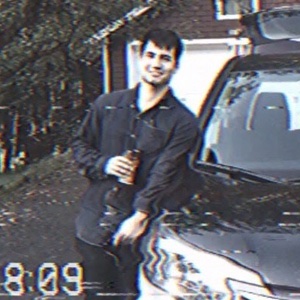65+ Scary French Horror Movies
A list of all the best French horror movies.
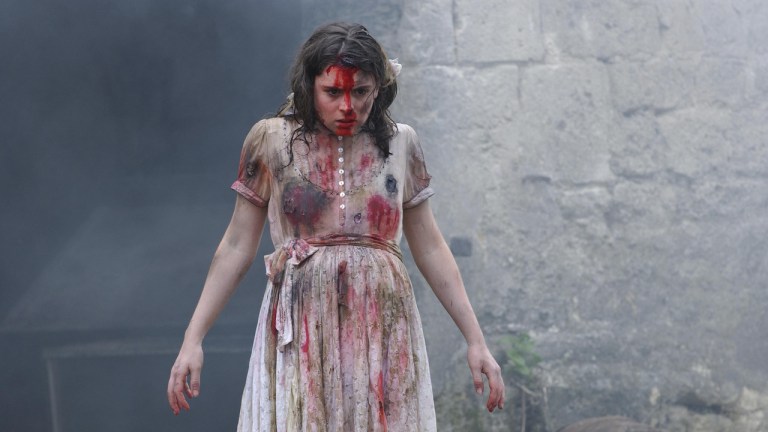
For many people, French cinema is associated with sex, romance and art films. But as one of the oldest and biggest film industries in the world, France has also produced extraordinary horror movies. In fact, some film historians say the French invented horror movies.

While the horror genre is not as big of a part of the French film industry as it is in Hollywood or other countries (like Italy), France has produced some extraordinary horror movies. Notably, the transgressive New French Extremity era produced memorable horror films like Irreversible (2002), Baise-Moi (2000), Trouble Every Day (2001) and In My Skin (2002). In the U.S., French horror movies can be difficult to find and stream.
This list catalogs all types of French horror movies from classic chillers, to the transgressive era of New French Extremity, exploring the rich and vibrant history of horror in France.
Table of Contents
Old French Horror Movies: 1800s – 1960s
The Astronomer’s Dream (1898)
The Astronomer’s Dream is an extremely odd short film that is chock-full of special effects, which is a dazzling feat considering the year it was made. It starts in an astronomer’s observatory where a humble scientist is suddenly greeted by Satan himself. Without spoiling the plot, let’s just say it continues being supremely strange until the very end where we see the astronomer sleeping and realize it was all just a disturbing nightmare. The original French title is La Lune à un Mètre (in English: The Moon at One Meter).
The Fall of the House of Usher (1928)

This adaptation of The Fall of the House (released in France as La Chute de la Maison Usher) is a beautiful twist on American author Edgar Allan Poe’s classic tale. This silent film is just over an hour long, and it faithfully recreates the haunting nature of the original story with its expressionistic visuals and experimental editing. Widely considered one of the best Poe adaptations of all time, the script was originally cowritten by surrealist genius Luis Buñuel. Director Jean Epstein didn’t agree with Buñuel on how to interpret Poe’s work, which led to the writer leaving the production. It is unclear how much of Buñuel’s original script is present in the final film.
An Andalusian Dog (1929)
While this movie was made by two Spaniards, Luis Buñuel and Salvador Dalí, it was made in France (filmed in Le Havre and Paris) and premiered at Studio des Ursulines in Paris. A silent film, Un Chien Andalou is considered an early surreal masterpiece. It’s still a shocking and unusual film to watch today, but don’t assume everything will make sense the first time you watch this arthouse movie. The movie’s plot is bizarre to say the least, and it follows logic that can only be described as dream-like. Also, if you blink at the beginning you might miss the film’s most famous and unnerving scene where a straight razor slices through an eyeball.
Le Golem/The Golem (1936)
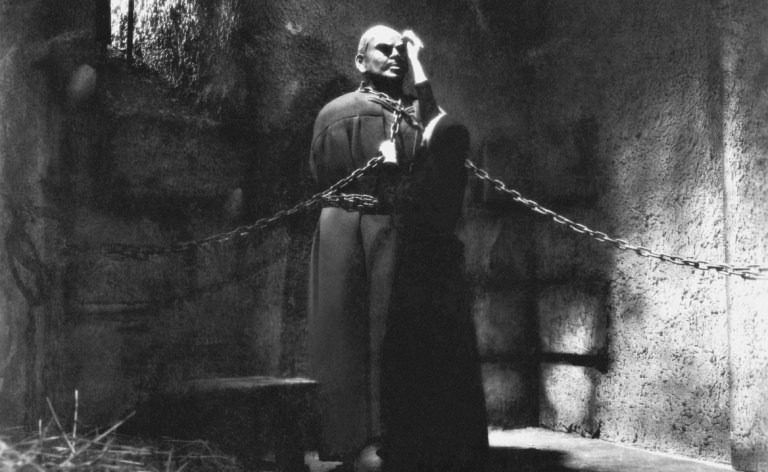
Titled Le Golem in French, this French/Czech coproduction is a retelling of the classic Jewish folk tale about a monster made of stone who sleeps during peaceful times but is awakened by carving the Hebrew word for “truth” on his forehead whenever the Jewish community is threatened. Set in Prague, where the Holy Roman Emperor is severely oppressing members of the Jewish ghetto, the Golem is awakened, only to be arrested and kept chained in a jail cell. The sound of lions roaring enrages him to the point where he breaks his chains. He is only put safely to sleep again once a single Hebrew letter on his forehead is erased, changing the word to “dead” instead of “truth.”
Carnival of Sinners (1943)

Carnival of Sinners is a fantasy-horror film that tells the story of a frustrated artist. Roland Brissot (Pierre Fresnay) is a painter whose lack of talent and ambition lead him to accepting a dangerous offer involving a mysterious and grotesque talisman. The talisman (a severed hand) works for Brissot, but the price he must pay may be his eternal soul. The film was inspired by the French story La Main Enchantée by author Gérard de Nerval, and the visual style is inspired by German expressionism.
Les Diaboliques (1955)
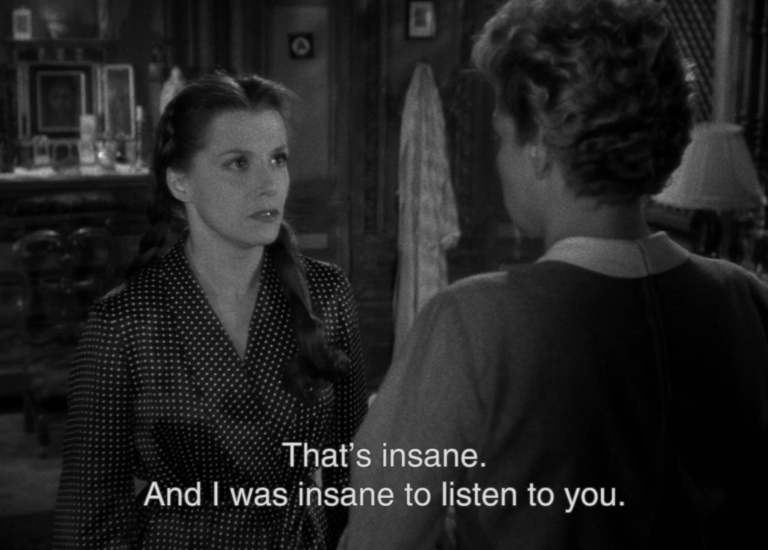
A landmark in modern horror, Les Diaboliques was released in the US under three different titles: Diabolique, The Devils, and The Fiends. It’s a blend of horror and psychological thriller in which a woman and her husband’s mistress team up to kill the husband. The film was based on a novel called She Who Was No More, and director Henri-Georges Clouzot reportedly snapped up the screenplay rights to block Alfred Hitchcock from obtaining them. The vengeful women carry out their evil plot and sedate the husband, drown him in a bathtub, and then dump his body in a swimming pool, figuring he’ll float to the top and his murder will be mistaken as a drowning. But he never floats to the top, and when they drain the pool, there’s no sign of his corpse. Robert Bloch, who wrote the novel Psycho on which the Hitchcock film was based, said Les Diaboliques was his favorite horror movie of all time.
Eyes Without a Face (1960)

Eyes Without a Face (Les Yeux sans Visage) is based on the novel of the same name by Jean Redon about a plastic surgeon who becomes obsessed with the idea of giving his daughter — who became horribly scarred in a crash — a face transplant. There is kidnapping and corpse-dumping, but it turns out that all the pain and drama was in vain, because the face-transplant surgery backfired. The mask the daughter is forced to wear to cover her disfigurement is ultra-creepy in that “uncanny valley” way that it’s almost human-looking, but not quite. The film’s American title later became the title of a 1984 song by new wave artist Billy Idol.
[The main character is] like an undead Audrey Hepburn. It influenced me a lot with the contrast between beauty and brutality…The clash of haunting and enchanting imagery has seldom been more powerful. Eyes Without a Face boasts an extraordinary soundtrack [by Maurice Jarre] too!
Guillermo del Toro on his favorite horror movie
Alphaville (1965)
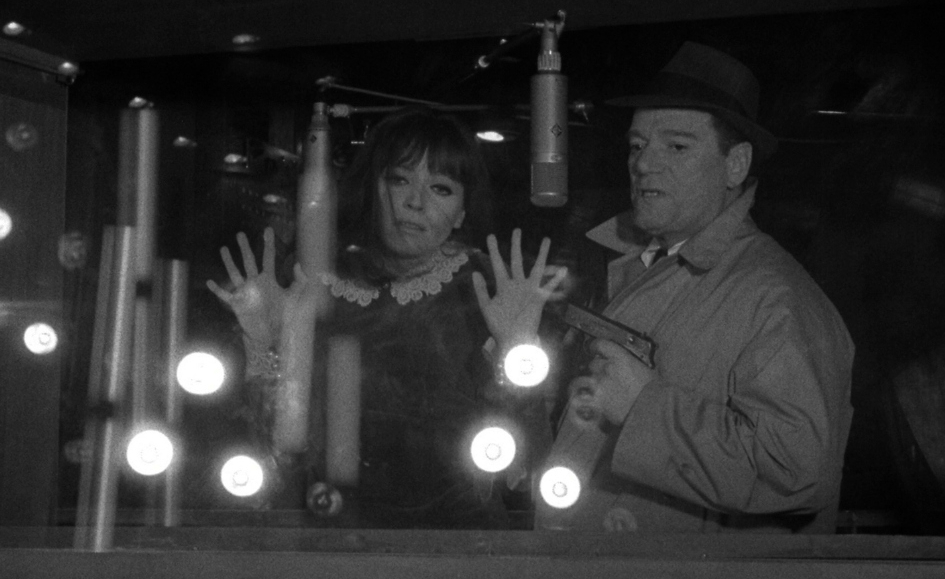
While this odd movie from Jean-Luc Godard might not fit the traditional definition of a horror film, its dark, dystopian tone make it a hit with fans of classic horror cinema. Eddie Constantine stars as Lemmy Caution, a secret agent who is sent on a mission to bring down the futuristic city of Alphaville. In Alphaville, individualism is outlawed, and expressing emotions is seen as suspicious behavior. Though the delivery of its messages may seem quaint to modern viewers, Alphaville is still a highly entertaining, influential, and poignant film.
Le Viol du Vampire (1968)
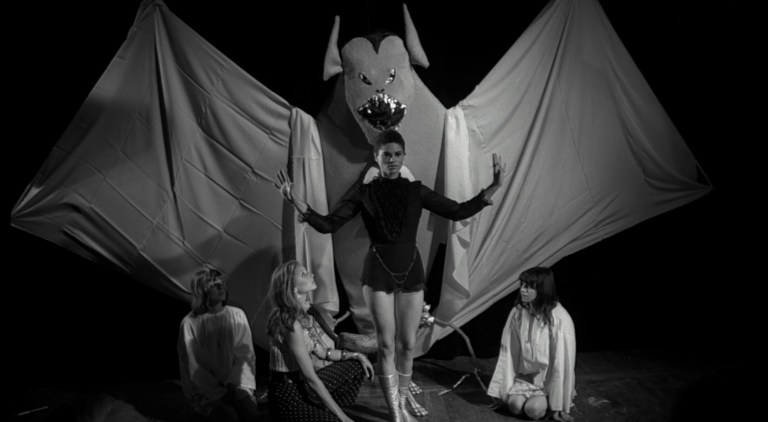
Directed by Jean Rollin, Le Viol du Vampire is an erotic vampire movie split into two segments: ‘The Rape of the Vampire’ and ‘The Vampire Woman/Queen of the Vampires.’ The first story is about four sisters who believe they are vampires, but are challenged in that belief by three strangers. The second story is involves a convoluted plot about a vampire queen and a doctor seeking to cure vampirism. The film marks Jean Rollin’s directorial debut. Rollin would go on to make a major mark on French vampire film history.
Newer French Horror Movies: 1970 – 2000
Don’t Deliver Us From Evil (1971)
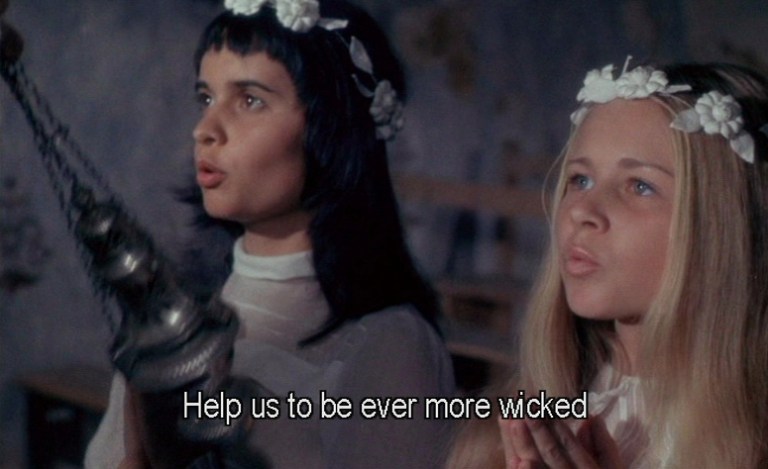
During summer break at a Catholic boarding school, two upper-class teenage French girls derive great joy from tormenting everyone around them with increasingly vicious pranks and crimes. They work their way up to killing animals before forming a blood pact with Satan. They are convinced that the Devil will reward them in the afterlife, culminating in a wild finale. The film’s original French title was Mais Ne Nous Delivrez Pas Du Mal.
Countess Perverse (1973)
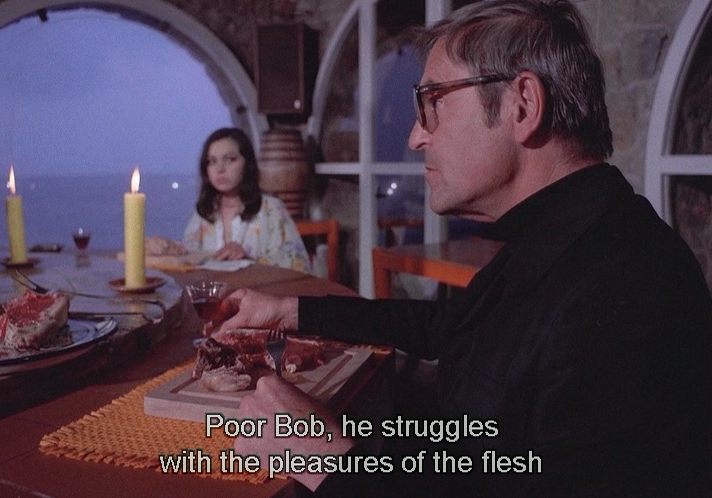
Countess Perverse is a lurid exploitation movie about humans hunting humans, sex, and cannibalism (though not necessarily in that order). A rich Count (Howard Vernon) and Countess (Alice Arno) welcome a young woman named Silvia (Lina Romay) to their remote island, but Silvia’s vacation is about to turn into a fight for survival. This movie is marketed under several names: La Comtesse Perverse, Sexy Nature, Female Vampire, and The Swallowers. The movie is a highly sexual take on vampires/cannibalism and their relationship to sex. As you might expect, this one has a lot of nudity.
Les Démoniaques (1973)
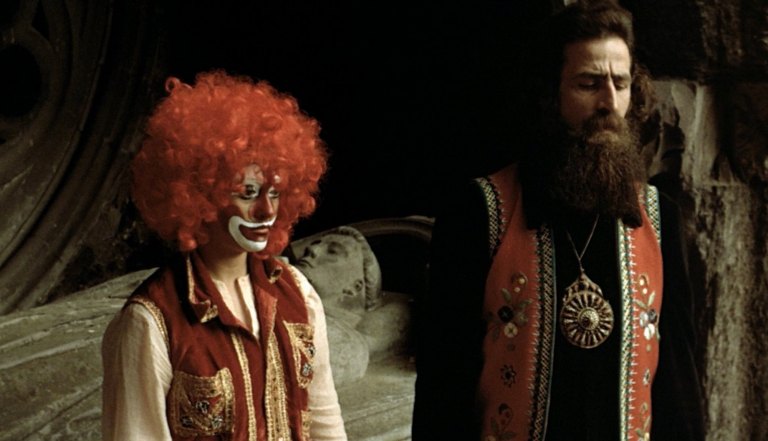
Les Démoniaques is an erotic Satanic horror film directed by famous French auteur Jean Rollin. It concerns a group criminals who cause shipwrecks in order to loot the wreckage. One night they end up raping two women. Seeking revenge, the women are led by a woman made up like a clown to ruins which are rumored to be haunted. This is where they have sex with the Devil in exchange for being granted superpowers that enable them to exact revenge against their rapists. Les Démoniaques is quite odd and filled with graphic nudity.
Shock Treatment (1973)
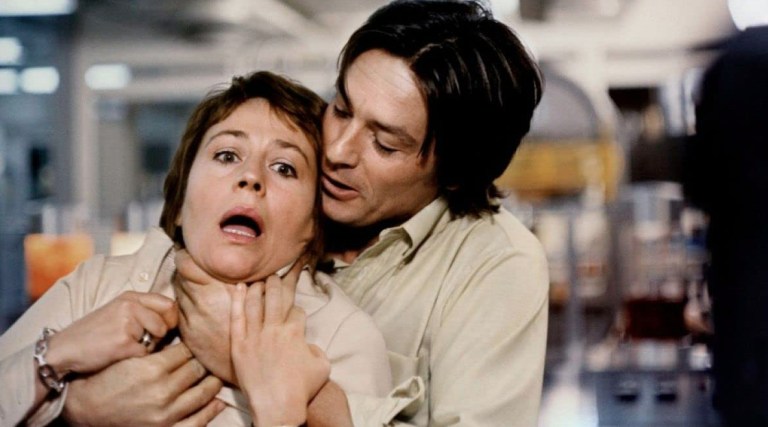
38-year-old Hélène Masson (Annie Girardot) checks into a private clinic that promises a special treatment that defies the aging process. It seems too good to be true, and when Hélène begins to notice people disappearing or ending up dead, it’s clear something is wrong. She then investigates the clinic, putting her on the bad side of the charming yet devious Dr. Devilers (Alain Delon).
The Tenant (1976)

A psychological horror movie directed and co-written by disgraced director Roman Polanski as the final installment in his “Apartment trilogy”, after Repulsion (1965) and Rosemary’s Baby (1968). The Tenant follows Trelkovsky as he rents a Parisian apartment that was previously inhabited by a woman who died by suicide. Trelkovsky begins to believe that the building’s inhabitants are conspiring to force him into a similar fate.
The Grapes of Death (1978)
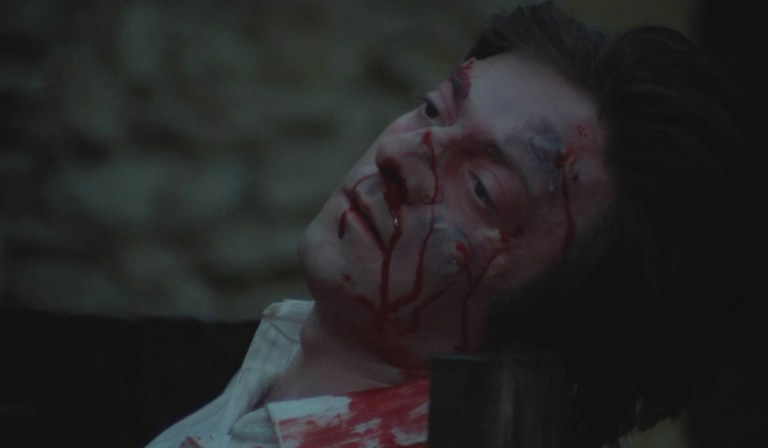
The Grapes or Death is a zombie movie from director Jean Rollin with the tagline “when the wine flows, the terror begins.” Elizabeth (Marie-Georges Pascal) travels to a village to live with her fiancé on his vineyard, but on her way she discovers a horrible infection that turns people into hideous, murderous zombies. Unknown to her, her destination is ground zero for the zombie infection.
Possession (1981)
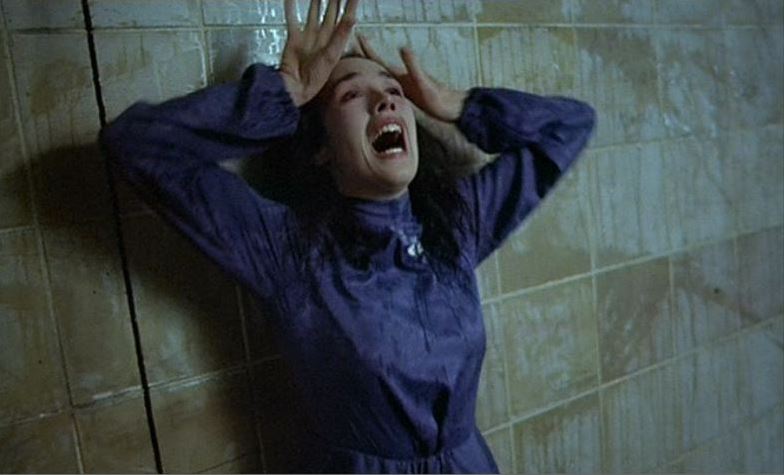
This co-production between France and Germany sees Sam Neill and Isabelle Adjani as a husband and wife going through a horrific divorce. After Mark (Neill) returns home from time away, he notices his wife Anna’s (Adjani) increasingly erratic behavior. Mark is no better, and their doomed marriage takes some bizarre and terrifying turns as the days go by. Possession is a must-watch for horror fans, not the least of which for the award-winning performance of Isabelle Adjani.
Frankenstein 90 (1984)
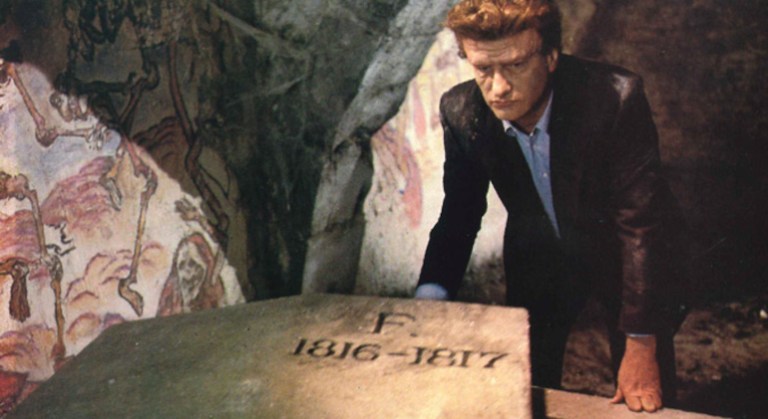
Frankenstein 90 is a comedic take on Marry Shelley’s classic 1818 novel Frankenstein; or, The Modern Prometheus. The movie involves a computer whiz who makes an ugly monster who falls in love with a female monster who is composed of various body parts from murdered strippers. Reviews and commentary about the film vary wildly, but it’s a fun flick for fans of spoofs. Plus, Academy Award winning director Bong Joon-ho says it’s his guilty pleasure.
Baxter (1989)

Baxter is likely the best animal-attack movie to ever come out of France. The film stars a white bull terrier named Baxter who is highly intelligent and dangerously sociopathic (if a dog can be a sociopath). Baxter is initially given to an old woman, but he’d rather be with the young couple across the street. So Baxter kills the old woman to get his way. The movie plays out as a series of incidents like this where Baxter sets his mind on something he wants, and he is perfectly fine with murder if that’s what it takes.
See also: 16+ Most Memorable Dogs in Horror Movies
36.15 Code Père Noël (aka Deadly Games, 1989)
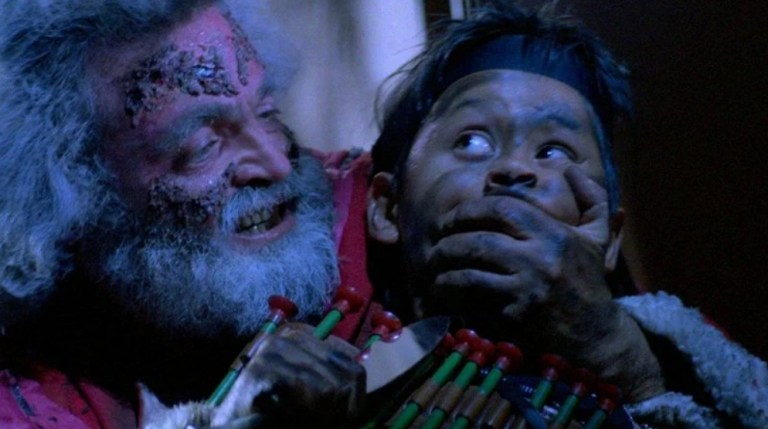
36.15 Code Père Noël is a French horror thriller involving a young boy, Thomas (Alain Lalanne) who is alone in his mother’s mansion on Christmas Eve. Thomas attempts to contact Santa Claus—but instead contacts a local bum who simply looks like Santa Claus. The bum finds a Santa outfit just to make it more believable and murders two people and the young boy’s dog upon reaching the mansion. Thomas then sets up booby traps around the house to try to stop the deranged killer. It was released in English with several different titles: Game Over, Hide and Freak, Dial Code Santa Claus, and Deadly Games.
Delicatessen (1991)

Delicatessen is a French comedy/horror movie directed by frequent collaborators Jean Pierre Jeunet (famous in America for Amélie) and Marc Caro. This bizarre and slightly surreal sci-fi fantasy film takes place in a post-apocalyptic France where food is scarce. A butcher, Clapet (Jean-Claude Dreyfus) puts out ads for workers in the apartment building he also runs, just so he can kill whoever applies and sell their meat as food. The newest applicant, a former circus clown, falls in love with the butcher’s daughter, and they conspire to lead a group of “vegetarian rebels” who seek to save her lover before her father inevitably murders him like he’d murdered all the rest.
Sombre (1998)
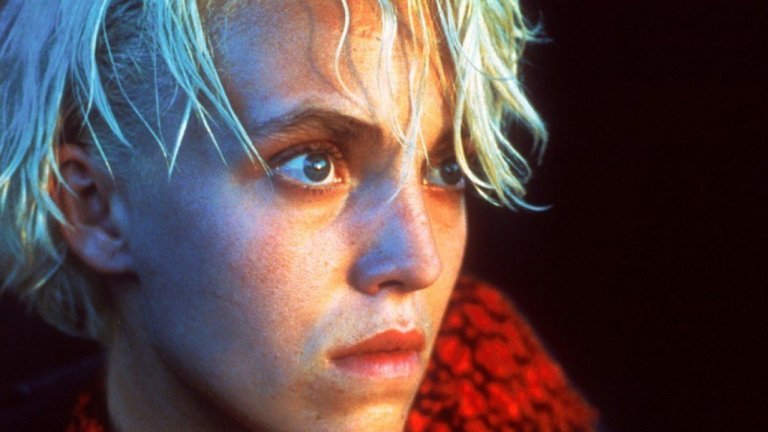
Jean (Marc Barbé) helps a troubled young woman, Claire (Elina Löwensohn), whose car broke down and she falls in love with him. What Claire doesn’t know is that Jean is a serial killer. He has been following the Tour de France in between murdering sex workers.
Modern French Horror Movies: 2000 – Present
The Crimson Rivers (2000)
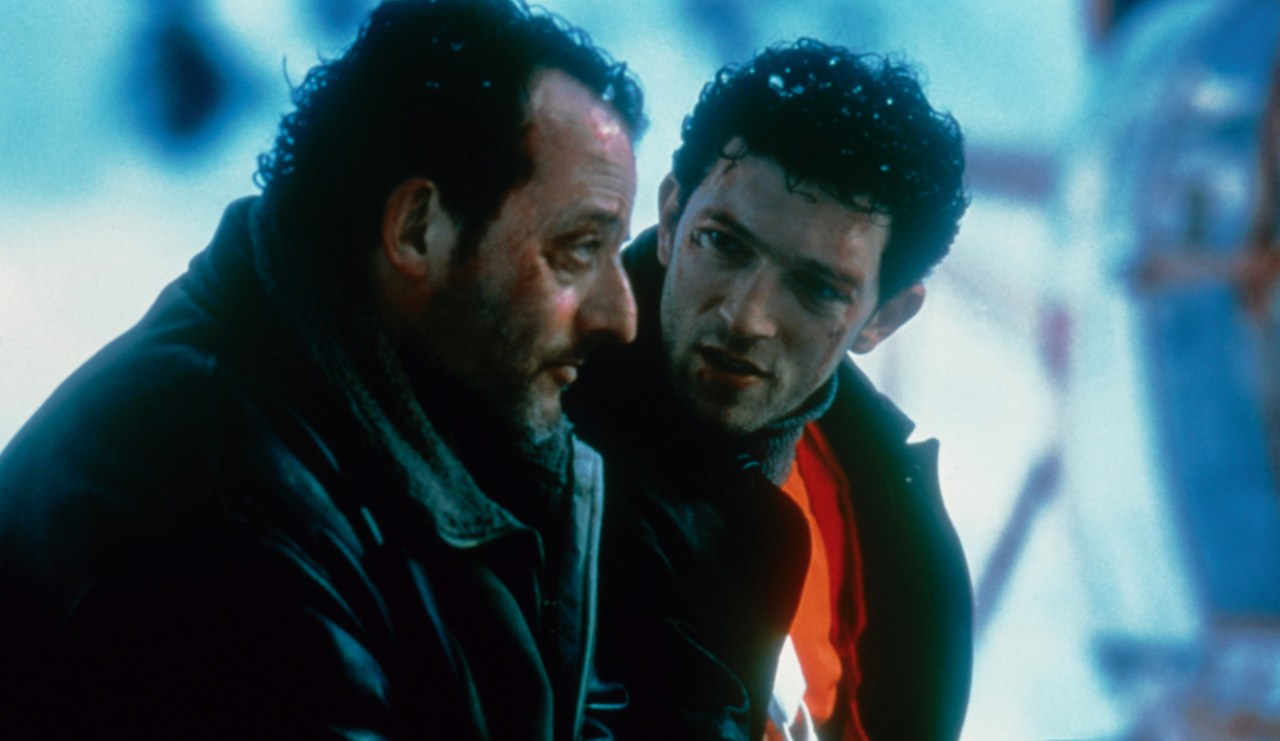
The Crimson Rivers (French: Les Rivières Pourpres) is a creepy psychological thriller based on a French novel Blood Red Rivers by Jean-Christophe Grangé. The movie follows the trail of a detective who is called to investigate the brutal murder of a college professor in which the victim’s eyes were removed. Meanwhile, another detective is investigating crimes in a town near the isolated university where the murder occurred. Their investigations eventually cross as the dead bodies pile up.
Baise-moi (2000)
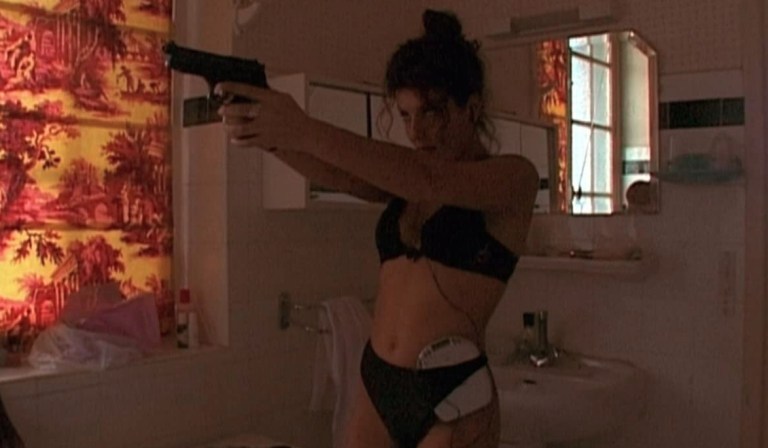
Directed and written by Virginie Despentes and Coralie Trinh Thi, the film is based on the novel of the same name by Despentes. Manu (Raffaëla Anderson) is a woman with no direction in life. After being sexually assaulted and then belittled for the very same act, Manu has had enough. Manu meets a prostitute, Nadine (Karen Lancaume), who has had a similarly horrific life, and the two of them join forces on a spree of sex and violence, giving back some of the pain they are forced to endure. Baise-moi is kind of like a dark and depressing version of Thelma & Louise (1991), but with ultra-violence and real sex.
Deep In The Woods (2001)
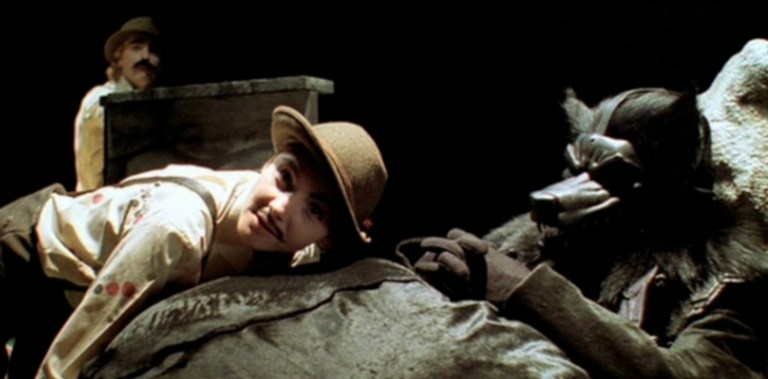
A young group of attractive actors is invited to perform at the mansion of Axel de Fersen. Isolated in this remote chateau, the actors are supposed to put on a performance of “Little Red Riding Hood” — but they don’t realize a murderer is on the loose. Deep in The Woods (French: Promenons-nous dans les Bois) is directed by Lionel Delplanque and stars Alexia Stresi, Clement Sibony, and Clotilde Courau.
Trouble Every Day (2001)
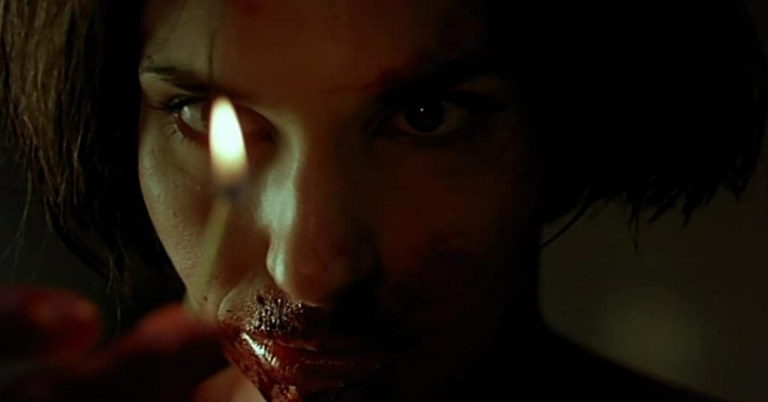
From respected French Filmmaker Claire Denis, Trouble Every Day is an erotic arthouse horror movie that mixes sex, obsession, and cannibalism. The story contains a bit of science fiction involving some sort of past experimentation that leads those infected to becoming murderously violent when sexually aroused. Shane (Vincent Gallo) is in Paris on his honeymoon with June (Tricia Vessey), but he is also there to find Coré (Béatrice Dalle) who he knows is infected. While the infection serves as the reasons for the action, the real focus of the movie is on Shane’s strained relationships with the June and Coré, and Coré’s horrific obsessions. Trouble Every Day received a cold response from audiences when it screened at the Cannes film festival, with audience walkouts and at least a couple of people fainting.
Irreversible (2002)
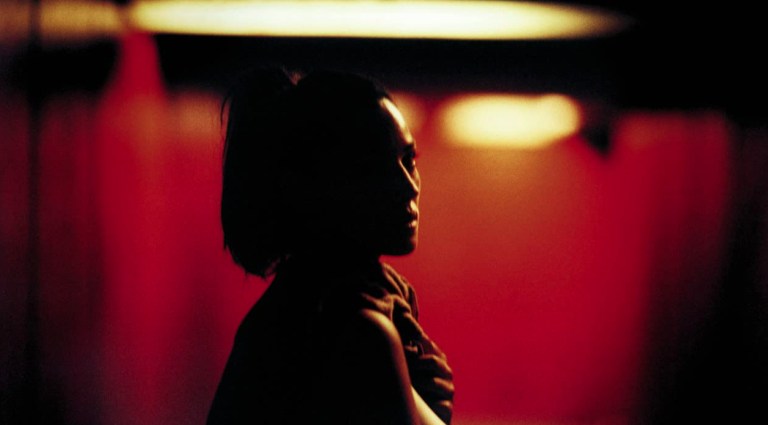
Notable for the fact that the story begins with the end and ends with the beginning and is told in reverse order throughout, the main story involves two men who roam through Paris seeking vengeance for a girl who was savagely raped. The rape scene itself goes on for an unbearable 10 minutes. Another scene, in which a man gets beaten to death with a fire extinguisher, is uncomfortably realistic. Director Gaspar Noé used a skeletal three-page script outlining the film’s twelve scenes told in reverse, meaning every word spoken is improvised. The film is so unpleasant that when it premiered at Cannes, the audience sat silent after it ended, nervously waiting for the next film to air. Newsweek called it the most walked-out film of 2002.
In My Skin (2002)
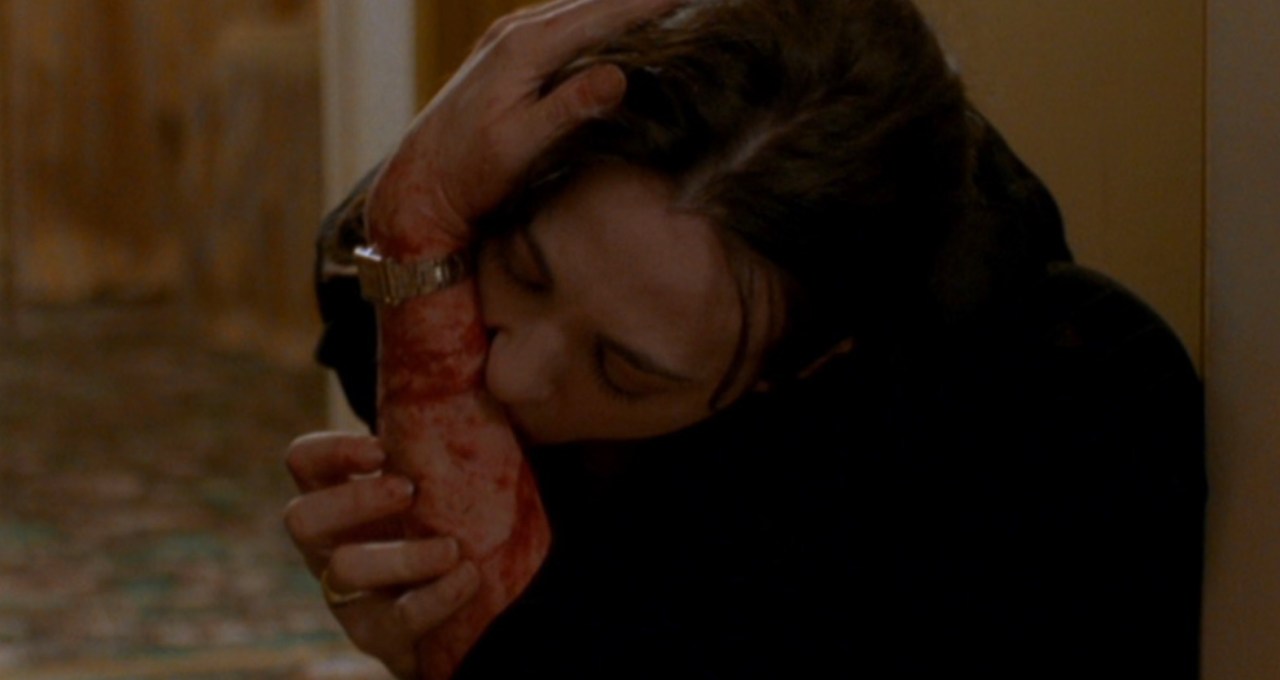
In My Skin was written by, directed by, and stars Marina de Van. Esther (de Van) is a successful woman living a happy life until an injury to her leg gives her an insatiable curiosity about her own body. It is a terribly gruesome movie that crescendos with a series of unwatchable acts of self-mutilation.
High Tension (2003)

High Tension is a violent slasher movie that starts with a home invasion before moving on to a becoming a kidnapping film. Marie (Cécile de France) sneaks into the truck of a serial killer where her best friend Alex (Maïwenn) is being held after the rest of Alex’s family was butchered. The body count rises as Marie tries to find the right time to save her friend from a nameless killer played by Philippe Nahon (who previously starred as the nameless butcher in Gaspar Noé’s I Stand Alone). High Tension is filled with blood and gore and famous for its twist-ending.
Calvaire (2004)

In Calvaire, a struggling singer named Marc (Laurent Lucas) becomes stranded in an isolated area of Belgium while traveling to his next gig. Marc stays at an inn run by a lonely old man, Bartel (Jackie Berroyer), who promises to fix his van, but the proprietor has some very unpleasant things in store for Marc. To make matters worse, the creepy locals aren’t any better than Bartel. Calvaire is an intensely uncomfortable backwoods horror movie.
Them (2006)

Supposedly based on a true story, Them (Ils in French) is a suspenseful French-Romanian home-invasion movie similar in premise to the American movie The Strangers (2008). One night, Clémentine (Olivia Bonamy) and Lucas (Michaël Cohen) are woken in their home by music playing outside. As they cautiously begin to investigate, mysterious assailants close in on them, breaking into their house and forcing the couple to fight for their lives.
Inside (2007)
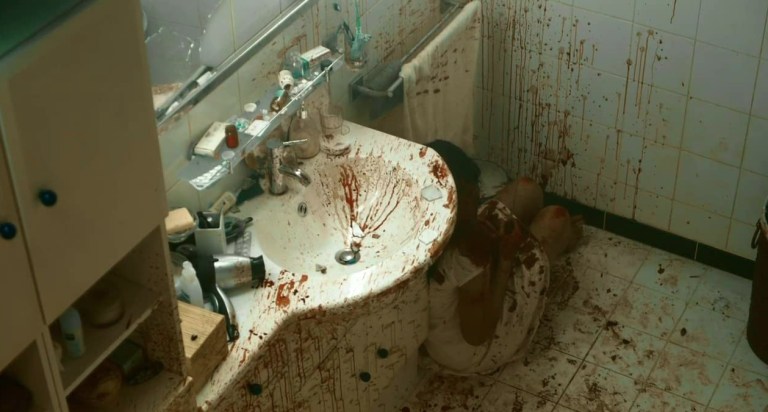
Titled À l’intérieur in French, Inside is a violent horror movie about a mysterious female stranger (Béatrice Dalle) who invades the home of a pregnant woman on Christmas Eve. The victim of the sadistic home invasion is Sarah (Alysson Paradis), an expectant mother who lost her husband in a car accident just months prior. The two women find themselves in an extended standoff as Sarah attempts to outlast her attacker by hiding in a bathroom, but further conflict is inevitable.
Frontier(s) (2007)

A far-right candidate gets elected President of France, leading to riots in Paris. A group of criminals performs a robbery in the turmoil. The thieves attempt to escape to the countryside, but unfortunately for them, the lodge they choose to hide out in is run by murderous neo-Nazis. The lodgers are subjected to horrendous torture, but by using extreme violence—so violent that the film was banned in Thailand—they manage to turn the tables on the Nazis.
Martyrs (2008)
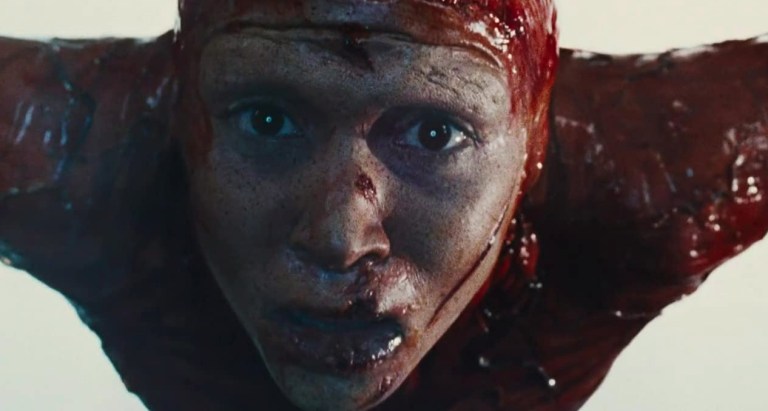
Martyrs begins as a movie about revenge, but it turns into a bizarre and gory film about torture and a secret society. Fifteen years after surviving imprisonment and torture, Lucie (Mylène Jampanoï) seeks revenge on her tormentors. Lucie is accompanied on her quest by her friend Anna (Morjana Alaoui), but Anna isn’t so sure about Lucie’s state of mind. Screenwriter Pascal Laugier says he was clinically depressed while writing the script.
Livid (2011)
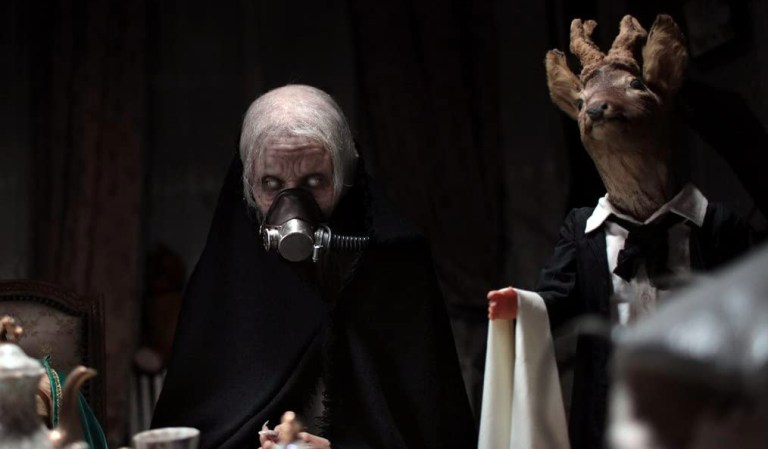
Breaking away from the (mostly) human horrors of New French Extremity, Livid is a creepy horror movie that focuses on the supernatural. The plot follows a trio of would-be burglars who break into a sickly old woman’s home after learning that there may a treasure hidden inside. The treasure is a trap though, and the three young thieves find themselves locked inside the giant house with a family of vampires.
Raw (2016)
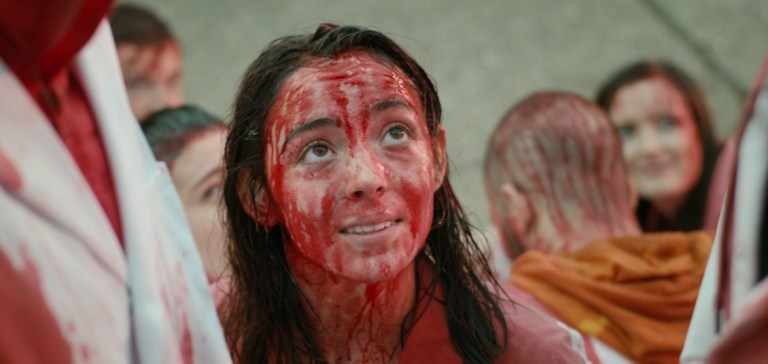
Titled Grave in French, Raw is about a young woman, Justine (Garance Marillier), who begins veterinary school. A vegan, Justine is forced to eat a rabbit kidney as part of a hazing ritual. Afterwards, she develops an insatiable craving for raw meat. While the premise may sound like a typical exploitation film, writer/director Julia Ducournau’s handling of the subject is profound.
Revenge (2017)
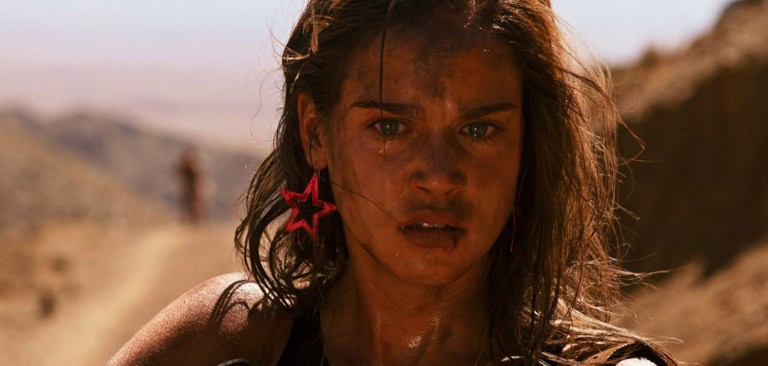
Revenge is a brutal and stylish thriller that wonderfully delivers exactly what its title promises. The movie stars Matilda Lutz as Jen, a woman who is involved in an affair with a married man named Richard (Kevin Janssens). While on a secret trip together, two of Richard’s friends show up. Jen is assaulted, and a botched attempt at escape has the trio of men leaving Jen for dead. Jen isn’t dead though, and she makes it her immediate mission to make sure her attackers pay for what they did.
Climax (2018)
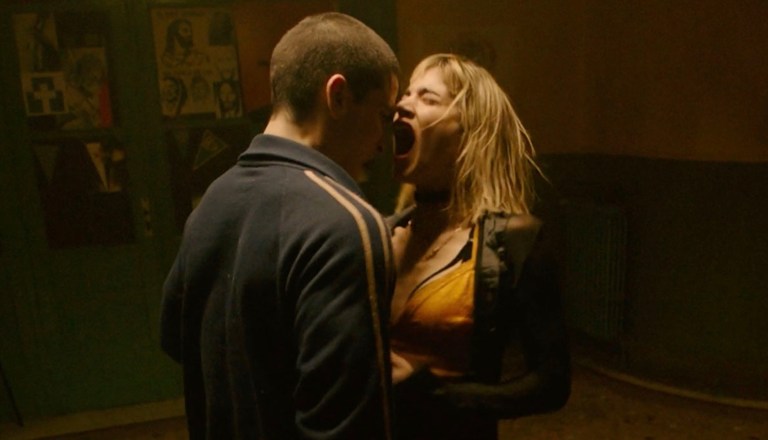
An experimental horror movie by Paris-based Argentine filmmaker Gaspar Noé of Irreversible infamy, Climax won the Art Cinema Award at the 2018 Cannes Film Festival. It took only six weeks from conception to completion and was shot in only 15 days. Even more remarkably, the script was only five pages long, and almost all of the dialogue was improvised. The plot involves an after-party for a dance troupe held in a remote school building where everyone’s increasingly odd behavior leads them to suspect that the party wine was spiked with LSD. The night leads to an unsettling mix of sex, violence, and dancing, all rendered in surreal and hallucinatory fashion.
Knife + Heart (2018)
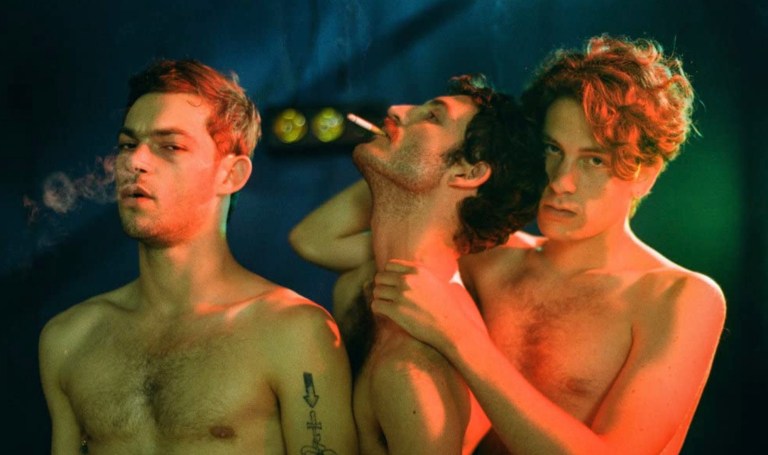
French superstar Vanessa Paradis stars as Anne, a gay porn director whose actors are being killed by an unseen stalker wearing a leather mask. Meanwhile, Anne struggles with alcoholism and her (mostly) unrequited love for her editor, Lois (Kate Moran). As the killer gets closer, Anne follows the clues, hoping to discover his identity.
The Night Eats the World (2018)
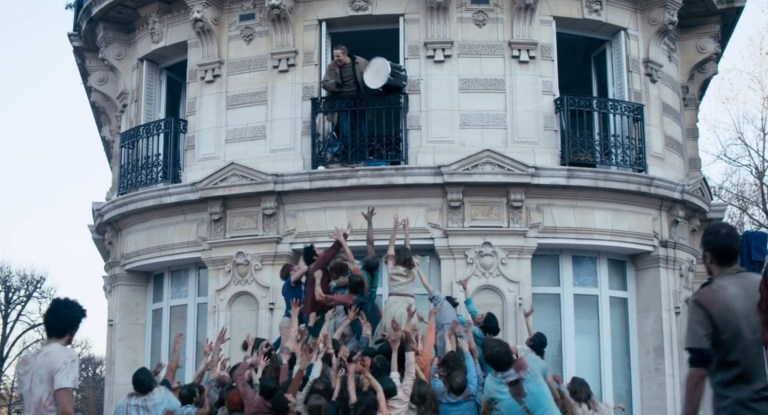
This French zombie movie sees a man passing out at a party at the Parisian apartment of his ex-girlfriend. When he wakes, all the other guests are dead and a zombie outbreak has overtaken the city. Isolated and lonely, the man struggles to survive.
Titane (2021)

Titane, Julia Ducournau’s follow-up to Raw (2016), is a difficult movie to classify. Most reviewers focus on the bizarre body horror spread throughout the movie and climaxing in a wild finale, but the Titane is about so much more than that. The movie follows the messed-up life of Alexia (Agathe Rousselle). Audiences first see Alexia as a little girl when she has a titanium plate implanted in her head after a car accident. As an adult, Alexia has an unhealthy relationship with automobiles, and she has a secret, murderous life that forces her to go on the run. Titane gets more intense and outlandish from there, and the movie is best experienced with as little prior knowledge as possible. In the end, Titane is a surprisingly touching movie about family, identity, and acceptance.
Infested (2024)
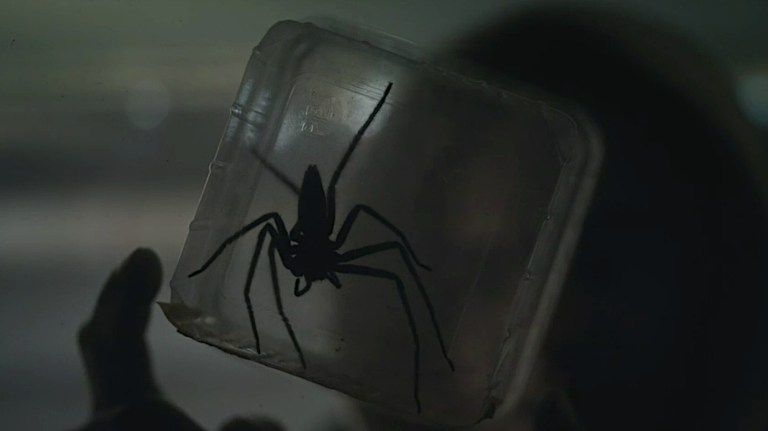
Directed and co-written by Sébastien Vaniček, the French title of this film is Vermines — literally vermin in English. It sees a man accidentally releasing a single venomous spider. This quickly leads to an overwhelming invasion of spiders in his apartment building — which all the residents struggle to survive.
More French Horror Movies
- The Blood Rose (1970) — An artist is desperate to restore his wife’s disfigured face at any cost.
- The Strangler (1970) — A serial killer targets depressed young women.
- Successive Slidings of Pleasure (1974) — An arthouse film about a young woman sent to a convent prison after her lover is murdered.
- The Iron Rose (1973) — A couple gets lost while on a walk through a cemetery.
- The Infernal Trio (1974) — A comedy horror movie about an unlikely trio of murderers in Marseille.
- The Night of the Hunted (1980) — A woman escapes from an asylum for amnesiac patients.
- Docteur Jekyll et les femmes (1981) — A 19th century engagement party turns into a night of sex and murder.
- Litan (1982) — A couple travels to a small village during the Festival of the Dead.
- Baby Blood (1990) — A gynaehorror film about a woman turned murderer due to the murderous fetus growing inside her.
- See the Sea (1997) — An Englishwoman with an infant daughter befriends a young homeless woman while her husband is away.
- Maléfique (2002) — Four prisoners discover a journal in the wall of their cell that may lead to their escape.
- The Girl from Nowhere (2012) — An isolated man takes in a young homeless woman, who may be the reincarnation of his late wife.
- A New Life (2002) — A young American soldier falls in love with a mysterious sex worker.
- Dead End (2003) — A family gets stuck on a road trip on Christmas Eve.
- High Lane (2009) — A slasher movie about an adventurous group of friends who discover they aren’t alone on a closed mountain trail.
- Stranded (2010) — A French platoon stranded in North Africa experience supernatural terror.
- Last Screening (2011) — A movie lover (and serial killer) lives in the basement of a theater.
- Incident in a Ghostland (2018) — Also simply titled Ghostland, this Canadian-French co-production is about a pair of sisters and how they deal with the lasting effects of a home invasion they endured years ago.
- Deerskin (2019) — A comedy horror movie about a man who becomes obsessed with a deerskin jacket.
- Kandisha (2020) — Friends summon an entity from Moroccan legend.
- The Advent Calendar (2021) — An international coproduction between Belgium and France that sees a paraplegic woman receiving a mysterious advent calendar as a gift.
- Final Cut (2022) — This remake of the Japanese film One Cut of the Dead is about a crew of a low-budget zombie movie and what happens when they try to make a short horror film in just one take.
- Humanist Vampire Seeking Consenting Suicidal Person (2024) — A French language comedy horror movie by Québécois filmmaker Ariane Louis-Seize about a sensitive vampire and a suicidal man who may be the answer to each other’s problems.
- Under Paris (2024) — An action horror shark attack movie about a killer shark who has made its way into the Seine.
- The Substance (2024) — An international co-production between France and the United Kingdom, Coralie Fargeat won the Best Screenplay award at Cannes in 2024 for this body horror movie starring Demi Moore and Margaret Qualley.
Further Reading
